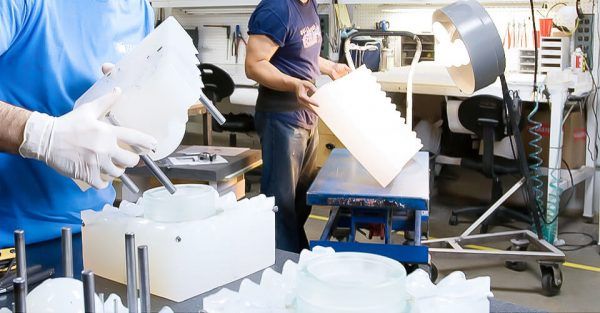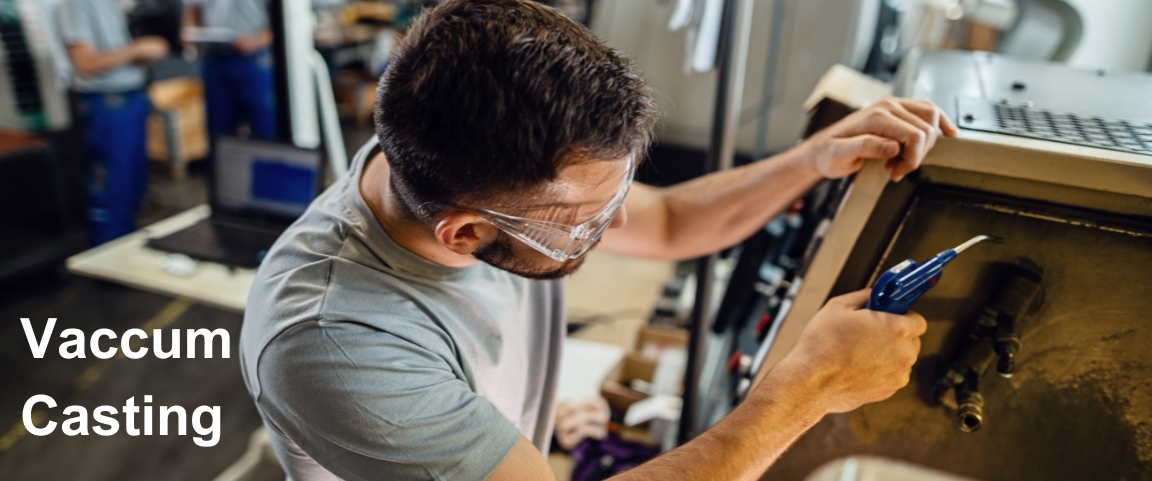Vacuum Casting Factory in China - Abcrapid

Vacuum Casting has grown to be a crucial part of current production and Factory in China are on the main fringe of this method. The technology plays a vital position in developing awesome factors and prototypes for industries in the course of the globe. Chinese factories specializing in vacuum casting have constructed a sturdy recognition for their capability to mix superior techniques with green manufacturing, making them a full-size contributor to the global delivery chain.
Vacuum Casting Factory in China
Vacuum Casting China is a manufacturing method that uses silicone molds and vacuum pressure to breed components with excessive precision. The system is extensively selected for its ability to copy amazing info and offer regular consequences across multiple production runs. In China, factories hire advanced strategies and systems to make sure that every product meets strict requirements at the same time as keeping performance. The focus on precision and scalability has made this approach mainly precious for industries in which accuracy and normal performance are essential.Manufacturing Surroundings in China
China has advanced a sturdy commercial environment that helps the Vacuum Casting Factory. With access to professional workers, superior equipment, and a properly-set up supply community, factories can function without difficulty and deliver merchandise to both domestic and international clients. This atmosphere also permits for quicker turnaround times, this is essential in aggressive markets. The combination of technology, staff know-how, and logistical useful resources has placed Chinese language factories as leaders in this area.Function in international Industries
Vacuum Casting Factory in China serve an extensive style of industries, which include automotive, aerospace, client products, and clinical gadget. The adaptability of the system makes it suitable for generating prototypes, small-batch runs, and specialised additives. Through offering dependable production capabilities, those factories make a contribution drastically to worldwide manufacturing and product improvement. Many worldwide organizations collaborate with Chinese factories to supply their thoughts to lifestyles brief and price-efficaciously.Technology and Innovation
Factories in China have embraced hold improvement in Vacuum Casting, constantly upgrading their system and strategies. From immoderate-performance silicone molds to unique vacuum chambers, the emphasis on innovation guarantees that every product reaches the expected nice requirements. Continuous improvement and the adoption of recent techniques permit factories to live aggressively in a hastily evolving marketplace. These improvements not simplest enhance efficiency however moreover amplify the possibilities for layout and manufacturing.Professional Staff and Expertise
One of the strengths of Vacuum Casting Factory in China is their skilled staff. Skilled technicians and engineers carry information in mold-making, fabric handling, and casting strategies. Their information and hobby to element play a crucial function in ensuring consistency and pleasant throughout manufacturing runs. The combination of workmanship and technical know-how provides a dependable foundation for assembling the expectancies of each home and global clients.Fee-Powerful Manufacturing
Any other defining feature of vacuum casting factories in China is their ability to offer rate-powerful answers. Through the manner of optimizing resources, leveraging scale, and preserving inexperienced operations, those factories can produce notable products at competitive costs. This stability among wonderful and affordability has made China a desired vacation spot for companies seeking out vacuum casting services.Contribution to Prototyping and Product Improvement
Vacuum Casting China performs a critical role in prototyping, helping organizations deliver their ideas to reality in advance than full-scale production. Factories in China are closely worried about product development, going for walks with designers and engineers to provide accurate models that resource selection-making. This functionality hurries up innovation and allows corporations to test functionality, appearance, and value in advance rather than committing to large-scale manufacturing.Sustainability and Destiny Outlook
As the worldwide market emphasizes sustainability more and more emphasizes sustainability, Chinese language Vacuum Casting China are adopting environmentally aware practices. Efforts together with decreasing material waste, improving strength efficiency, and recycling molds replicate a shift closer to more sustainable production. The future of vacuum casting in China is probable to involve even greater automation, virtual integration, and sustainable techniques to fulfill developing names while addressing environmental concerns.About Abcrapid
Abcrapid affords advanced Vacuum Casting offerings through its specialised Factory in China, handing over first-rate prototypes and small-batch manufacturing with precision. With professional professionals, cutting-edge facilities, and efficient approaches, Abcrapid guarantees accuracy, easy finishes, and reliable overall performance for numerous industries. The manufacturing unit supports product improvement with fee-powerful answers, fast turnaround, and strict exceptional standards. Trusted through worldwide clients, Abcrapid's Vacuum Casting Factory in China make it a dependable accomplice for remodeling revolutionary designs into useful merchandise.

Products Library
 vacuum casting China
vacuum casting China
 vacuum casting company
vacuum casting company
 vacuum casting factory
vacuum casting factory
 vacuum casting factory
vacuum casting factory




